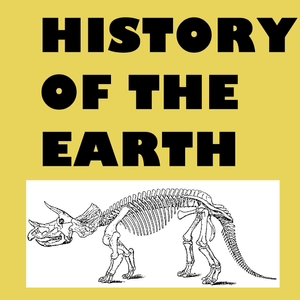
Today’s episode focuses on one of those wonderful jargon words geologists love to use: Ophiolites.
It’s not a contrived term like cactolith nor some really obscure mineral like pararammelsbergite. Ophiolites are actually really important to our understanding of the concept of plate tectonics and how the earth works dynamically.
The word goes back to 1813 in the Alps, where Alexandre Brongniart coined the word for some scaly, greenish rocks. Ophiolite is a combination of the Greek words for snake and stone, and Brongniart was also a specialist in reptiles. So he named these rocks for their resemblance to snake skins.
Fast forward about 150 years, to the 1960s. Geophysical data, deep-sea sampling, and other work was leading to the understanding that the earth’s crust is fundamentally different beneath the continents and beneath the oceans—and we found that the rocks in the oceanic crust are remarkably similar to the greenish, iron- and magnesium-rich rocks that had been labeled ophiolites long ago and largely ignored except by specialists ever since.
Those rocks that form the oceanic crust include serpentine minerals, which are soft, often fibrous iron-magnesium silicates whose name is yet another reference to their snake-like appearance. Pillow basalts, iron-rich lava flows that solidify under water with bulbous, pillow-like shapes, are also typical of oceanic crust. The term ophiolite was rejuvenated to apply to a specific sequence of rocks that forms at mid-ocean ridges, resulting in sea-floor spreading and the movement of plates around the earth.
The sequence usually but not always includes some of the most mantle-like minerals, such as olivine, another iron-magnesium silicate, that may settle out in a magma chamber beneath a mid-ocean ridge. Shallower, relatively narrow feeders called dikes toward the top of the magma chamber fed lava flows on the surface – but still underwater, usually – that’s where those pillow lavas solidified. There are certainly variations, and interactions with water as well as sediment on top of the oceanic crust can complicate things, but on the whole that’s the package. So why not just call it oceanic crust and forget the jargon word ophiolite? Well, we’ve kind of done that, or at least restricted the word to a special case.
Pillow Lava off Hawaii. Source: NOAA.
The word ophiolite today is usually used to refer to slices or layers of oceanic crust that are on land, on top of continental crust. But wait, you say, you keep saying subduction is driven by oceanic crust, which is denser, diving down beneath continental crust, which is less dense. Well, yes – but I hope I didn’t say always.
Sometimes the circumstances allow for some of the oceanic crust to be pushed up over bits of continental crust, despite their greater density. One area where this seems to happen with some regularity is a setting called back-arc basins, which are areas of extension, pulling-apart, behind the collision zone where oceanic crust and continental crust come together with the oceanic plate mostly subducting, going down under the continental plate. It took some time in the evolution of our understanding of plate tectonics for the idea to come out that you can have significant pulling apart in zones that are fundamentally compression, collision, but they’re recognized in many places today, as well as in the geologic past.
It seems to me that back-arc basins are more likely to develop where the interaction is between plates or sub-plates that are relatively weak, or small, and more susceptible to breaking. An example is where two oceanic plates are interacting, with perhaps only an island arc between them. The “battle” is a closer contest than between a big, strong continent and weaker, warmer, softer, oceanic crust, so slices of one plate of oceanic crust may be squeezed up and onto the rocks making up the island arc. This happens in the southwest Pacific, where the oceanic Pacific Plate and the oceanic part of the Australian Plate are interacting, creating back-arc basins around Tonga and Fiji and elsewhere. It also happens where continental material is narrower, or thinner, or where the interaction is oblique or complex. One example of this today is the back-arc basin in the Andaman Sea south of Burma, Myanmar, where the Indian Ocean plate is in contact with a narrow prong of continent, Indochina and Malaya.
We’ve now recognized quite a few ophiolites on land, emplaced there long...
03/20/18 • -1 min
Generate a badge
Get a badge for your website that links back to this episode
Select type & size
<a href="https://goodpods.com/podcasts/history-of-the-earth-6092/episode-392-ophiolites-224894"> <img src="https://storage.googleapis.com/goodpods-images-bucket/badges/generic-badge-1.svg" alt="listen to episode 392 ophiolites on goodpods" style="width: 225px" /> </a>
Copy